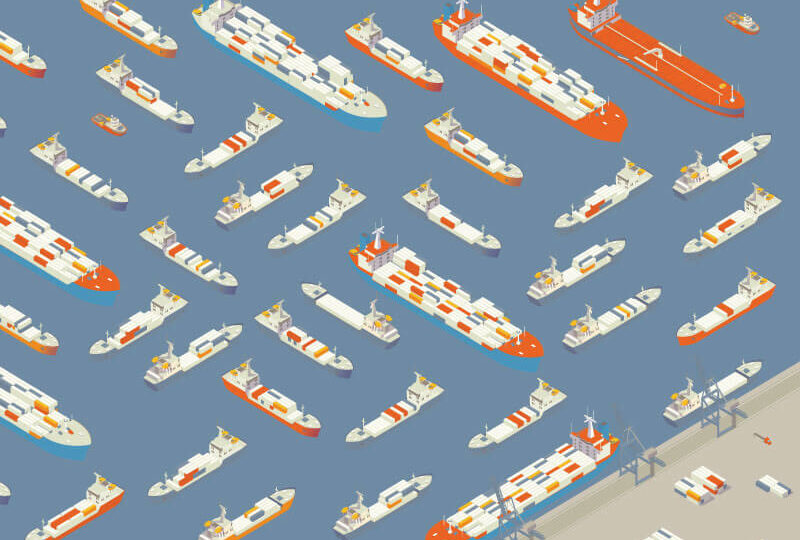
European Port Congestion (and What It Means for the US)
Ports all across Europe are experiencing the most severe congestion since the beginning of the COVID-19 pandemic. Cargo ships and barges are waiting for up to 77 hours to enter major ports like Rotterdam, Antwerp, and Hamburg. We’ll explore the factors that have caused the congestion and how it will affect the logistics industry in the United States.
What Is Causing Port Congestion In Europe?
There are two primary causes of port congestion in Europe:
- U.S. tariff policies
- Low river levels
The U.S. has inflicted heavy tariffs on Asia in 2025. To circumvent them, exporters in Asian countries are rerouting their shipments to Europe with the goal of entering their goods into these markets. However, this large influx of ships from Asia have caused various European ports to become crowded.
Rivers like the Rhine and Danube are used to transport freight to and from vital ports across Europe. Due to the dry spring many European countries experienced this past season, the water level in these rivers are too low for barges to safely travel back and forth. In some cases, barges have to wait days before they can retrieve freight from ports.
How Is Europe Dealing with Port Congestion?
Port authorities and logistics companies are responding to port congestion by hiring new employees and obtaining new equipment.
Some international carriers are also dealing with the problem by rerouting shipments to less busy ports or by implementing inland transportation surcharges.
Shippers are sure to be disappointed when their freight doesn’t arrive on time. To help adjust their expectations, companies are sending out warnings to shippers about the delays.
Despite the fast and strategic response from logistics companies in Europe, experts believe that congestion will end in August at the earliest.
How Does European Port Congestion Affect the US?
Port congestion in Europe affects the U.S. in two key ways:
- Shipping delays
- Increased ocean shipping costs
Due to port congestion, it will take longer for vessels carrying European goods to arrive back in the United States. They’ll have to endure wait times, not only for docking, but also for loading and unloading. This could lead to stockouts for businesses waiting on new products coming from Europe.
Delays also constrain capacity for cargo ships and other types of vessels. As a result, expenses to secure space on board of these vessels tend to increase. The additional shipping costs will inevitably funnel into retail prices for consumers in the United States.
What Can We Learn from This?
As we navigate this period of uncertainty, it’s important to remember that challenges like these present opportunities to become more agile, informed, and resilient. Port congestion in Europe is a reminder that global events—whether rooted in policy, environment, or infrastructure—can have far-reaching consequences.
By staying ahead of the curve, understanding the root causes, and keeping our teams and clients informed, we strengthen the foundation of our own logistics operations here at home. The global supply chain may be under pressure, but with the right mindset and shared focus, we can continue to rise to the occasion and support one another through whatever lies ahead.
